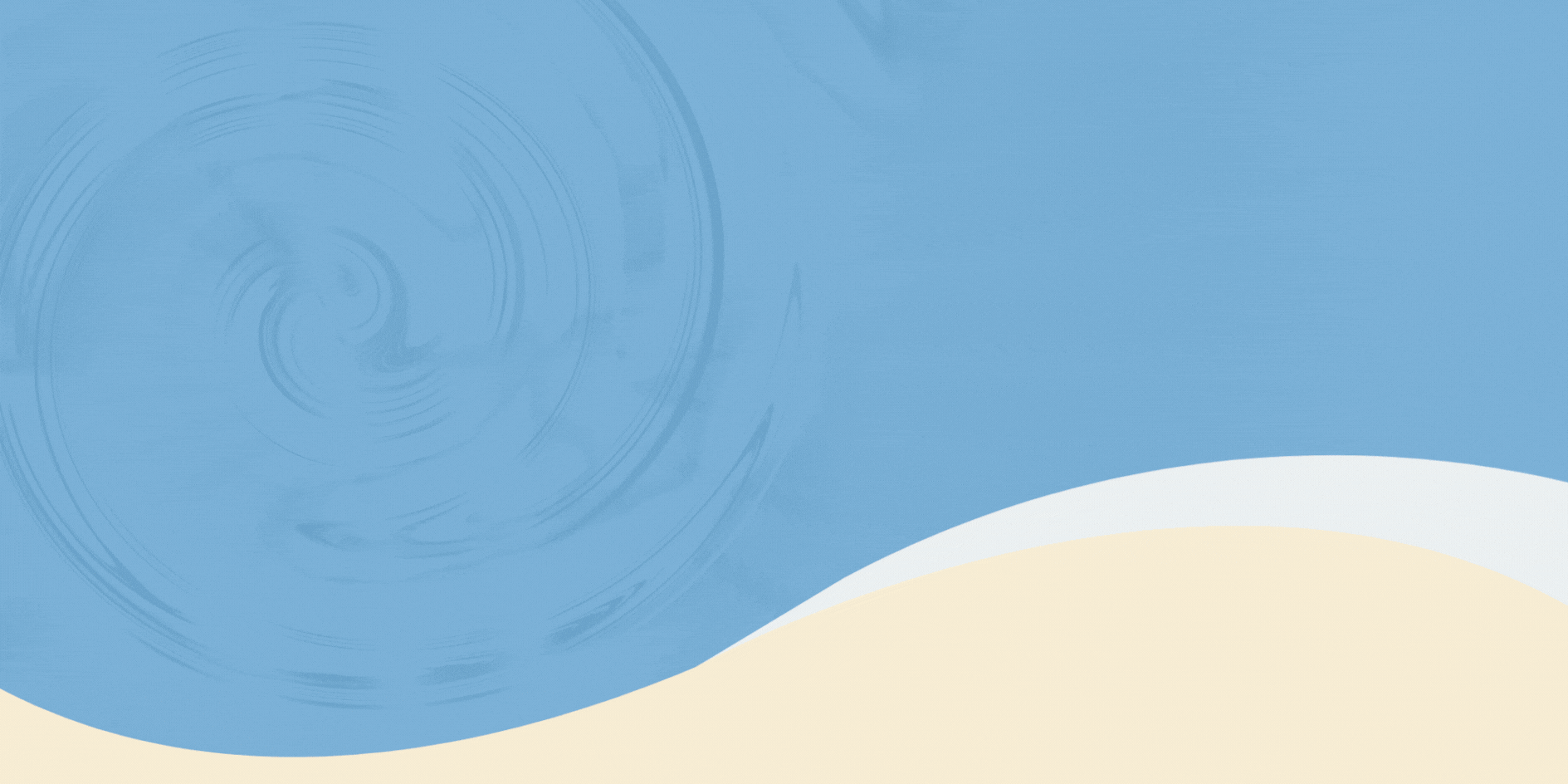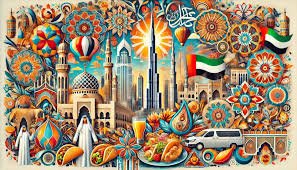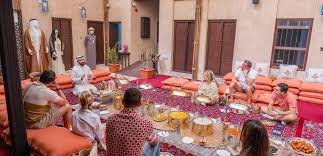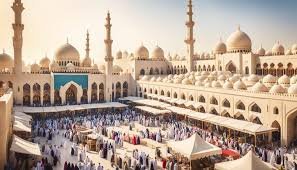From the heart of the desert to the grand stages of cultural festivals, traditional Emirati dance is more than an art—it is a language of heritage. Each stomp, sway, and chant echoes the resilience, pride, and poetic soul of the Emirates. Rooted in Bedouin customs and inspired by tales of war, celebration, and communal life, these dances continue to thrive, passed down from generation to generation.
Let’s take a journey into the vibrant rhythms and rituals of the UAE, where dances like Ayyala, Harbiya, and Razfa still stir the spirit of a nation.
Al-Ayyala: The Dance of Unity and Bravery
Arguably the most iconic of all Emirati dances, Al-Ayyala is often referred to as the “stick dance” or the “dance of the swords.” It is performed primarily by men, who stand in two facing rows, moving in unison to the rhythm of drums while holding thin bamboo canes to mimic swords.

The performance, sometimes seen at weddings or national events, symbolizes the strength and unity of the tribe. It reflects scenes from battle, but not with aggression—rather with honor, poetry, and pride. Behind the dancers, a group of women known as Na’ashat may rhythmically toss their long hair in sync with the music, adding to the grandeur of the moment.
Al-Ayyala was officially inscribed on UNESCO’s Representative List of the Intangible Cultural Heritage of Humanity in 2014—a significant move that has helped boost interest in preserving and promoting this vital tradition.

Harbiya: The Warrior’s Rhythm
While it shares similarities with Ayyala, Harbiya carries a slightly more intense tone. The name itself derives from “harb,” the Arabic word for war. In this dance, rows of men march or sway in tightly choreographed formations, often holding weapons such as swords or rifles, creating a sense of disciplined coordination.
The lyrics sung during Harbiya performances often reference bravery, past victories, and the virtues of loyalty and courage. Unlike Ayyala, Harbiya is sometimes performed without musical instruments, relying solely on the voices and footwork of the performers to carry the emotion.
Harbiya is a favorite during special ceremonies and UAE National Day celebrations, where it brings a powerful sense of tradition and valor to the spotlight.

Razfa: A Poetic Procession
Less combative but no less spirited, Al-Razfa blends dance and poetry into a rhythmic procession. Dancers chant lines of verse in call-and-response format, clapping and swaying in coordinated lines. Sticks or light swords may still be used, but the focus here is on verbal storytelling and cultural pride.
Razfa is highly participatory. Whether performed in a small village or a large urban plaza, it draws in young and old alike—making it a dance of true community.
This form of performance, though steeped in tradition, remains flexible. Modern Razfa often appears at school events, art festivals, and community initiatives, keeping the practice alive among newer generations.
Yowlah: Spinning Victory into Celebration
Often confused with Ayyala, Yowlah is another traditional Emirati dance that emphasizes rhythm, weapon twirling, and celebration. What sets it apart is its more theatrical elements—performers might spin rifles or swords high into the air, catching them in time with the beat of drums.
Yowlah is particularly popular in national competitions and TV programs in the UAE, such as the widely watched Fazaa Championship, which showcases the dance as a sport-like contest.
It is a breathtaking display of agility, timing, and artistry—and a testament to how traditional practices can adapt for modern platforms while still preserving their cultural roots.
Beyond the Stage: Why These Dances Matter
Traditional Emirati dances are more than entertainment—they are living symbols of identity. In a rapidly modernizing nation, where glass skyscrapers often stand beside desert dunes, these cultural expressions act as grounding forces.
Each dance preserves oral poetry, music, and movement in a form that is inherently Emirati. The themes—brotherhood, loyalty, valor, and joy—remain timeless. They foster national pride and serve as powerful cultural ambassadors during international events, giving the world a glimpse of the UAE’s soul.
Today, these dances are not only preserved through family and community gatherings but are also supported by national programs, cultural festivals, and heritage centers across the country.

Where You Can Experience Them
If you’re planning a trip to the UAE—or already live here—there are several great spots and events where you can experience these traditional performances up close:
- Global Village (Dubai): Regular Ayyala and Harbiya performances are held during the cultural season.
- Qasr Al Hosn Festival (Abu Dhabi): This event features rich demonstrations of UAE dance traditions.
- Heritage Village (Dubai & Abu Dhabi): Offers cultural tours and scheduled performances year-round.
- UAE National Day Celebrations (December 2): Across malls, schools, and parks, you’ll find performances throughout the country.
- Sharjah Heritage Days: A great place to experience Yowlah and Razfa in a community setting.

The Future of Traditional Dance in the Emirates
With dedicated cultural institutions, increasing visibility in schools, and digital archiving efforts, these dance forms are not only being preserved but also evolving.
Young Emiratis are learning the steps through cultural programs and TikTok snippets. Costume designers are blending traditional fabrics with modern aesthetics. And global platforms like UNESCO have given these traditions a spotlight that ensures they won’t be forgotten.
In a world rushing forward, the UAE’s dance traditions serve as an elegant pause—a moment to honor the past, celebrate identity, and move forward in rhythm.
Follow us on Instagram: UAE STORIES
How Prayer and Meditation Transformed My Mindset in Vibrant Dubai















